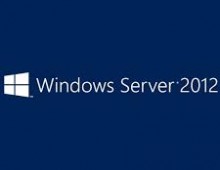Windows Server 2012 Workgroup Vs Domain by David Hutton 27th January 2014

A recent article on Winsupersite reports how PC owners can now connect directly to Windows Server 2012 Essentials without the need to add each computer to a domain. Of course, many questions have arisen as to what constitutes a domain and what role does it actually perform in the small business or home office environment.
The reaction to this announcement was widely diverse, depending on the experience level of the reader. The more knowledgeable user was wondering why the domains were getting such a bad rap in the press. After all, Essential 2012 had an excellent reputation for having one of the best domain setups in the industry. Other less technically minded users might have been using a non-Essentials Windows Server 2012 without owning any other type of Windows server products. This left them scratching their heads, wondering if they were missing something critically important.
What is the role of a domain?
Many personal computer users may not even be aware that they are actually operating with a domain in the first place. A domain can simply be two or more computers connected with wires or through a wireless router. In Microsoft speak, this is known as a “workgroup”, a term that usually sounds more familiar to the average PC owner. In most cases, each separate computer in the workgroup has its own programs, setup preferences, and applications. Users just sit down and start working.
Where the Windows Server 2012 Essentials comes into play is when these home office or small business networks want to begin sharing between the larger numbers of computers. Although workgroups can be manipulated to share folders and printers, it can get a bit confusing and tedious setting up all of those individual employee permissions on numerous individual folders. Another concern is when several computers are connected to the only in-house printer. Connecting through a workgroup might work well at first, but once you begin connecting ten or more computers through a workgroup, things can get tricky.
Windows “Domains” differ from “Internet Domains”
Keeping this in mind, let’s look at an example of a small business with ten computers. While each computer might be used primarily by a single individual, this is not necessary always the case. Employees may need the ability to move around and share. Windows Server 2012 Essentials makes that option infinitely easier to manage.
Using the traditional workgroup configuration, each computer would require individual user accounts created for each of the ten employees on all ten computers. This would require a great deal of app and software downloads and installations on each individual unit.
Before Windows Server 2012 Essentials came along, the configuration of the attached AD server was very difficult and very complex for small business owners. Since most ten-person offices do not employ a high-tech computer geek, this led to a great deal of frustration and hand wringing. But the Essentials update is incredibly easier to install and manage. The end result is an ability to configure those separate, ten user profiles in one centralized location. Employees can travel from computer to computer effortlessly. Passwords and software updates need only occur in one location. Windows Server 2012 Essentials does not yet provide the ability to use either the domain or the workgroup, but many expect that option to be included in the next update.